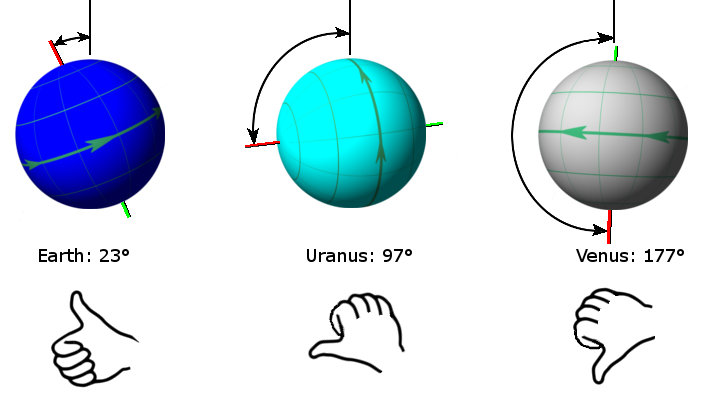Astronomy 101
- Introduction to Astronomy
- The Solar System
- Stars and Galaxies
- The Milky Way and Other Galaxies
- Telescopes and Observatories
- The Sun and the Moon
- The Earth and the Sky
- Space Exploration
- Astrobiology
- Space-Time and Relativity
- Black Holes and Neutron Stars
The Earth and the Sky
Module 7, Unit 1: Earth's Rotation and Revolution

Angle between the rotational axis and orbital axis of a body.
Introduction
Understanding the Earth's rotation and revolution is fundamental to understanding many aspects of our daily lives, from the cycle of day and night to the changing of the seasons. In this unit, we will explore these movements and their effects in detail.
Earth's Rotation
The Earth rotates on its axis, an imaginary line that runs from the North Pole to the South Pole. This rotation happens once every 24 hours and is the reason we experience day and night.
When one side of the Earth faces the Sun, it experiences daylight. As the Earth continues to rotate, this side moves away from the Sun, transitioning into night. Meanwhile, the other side of the Earth begins to face the Sun, transitioning from night to day. This continuous rotation creates the 24-hour cycle of day and night that we are all familiar with.
The speed of Earth's rotation is not uniform across the planet. At the equator, the Earth's surface is moving at a speed of about 1,670 kilometers per hour due to rotation. However, as you move towards the poles, this speed decreases because the circles of rotation become smaller.
Earth's Revolution
While the Earth is rotating on its axis, it is also revolving around the Sun. This revolution takes about 365.25 days, which we round down to 365 for convenience in our calendar year. The extra 0.25 days is why we have a leap year every four years - to account for those extra hours.
The path that the Earth takes around the Sun is called its orbit. The Earth's orbit is not a perfect circle, but an ellipse, meaning it is slightly elongated. This means that the Earth is not always the same distance from the Sun. However, contrary to popular belief, the changing distance to the Sun is not what causes our seasons. That has more to do with the tilt of the Earth's axis, which we will discuss in the next unit.
Conclusion
The Earth's rotation and revolution are fundamental to our experience of time. The rotation of the Earth on its axis gives us our cycle of day and night, while its revolution around the Sun gives us our year. Understanding these movements helps us understand many other aspects of our world, from the changing of the seasons to the behavior of the stars in the night sky. In the next unit, we will explore how the tilt of the Earth's axis affects our seasons and climate.